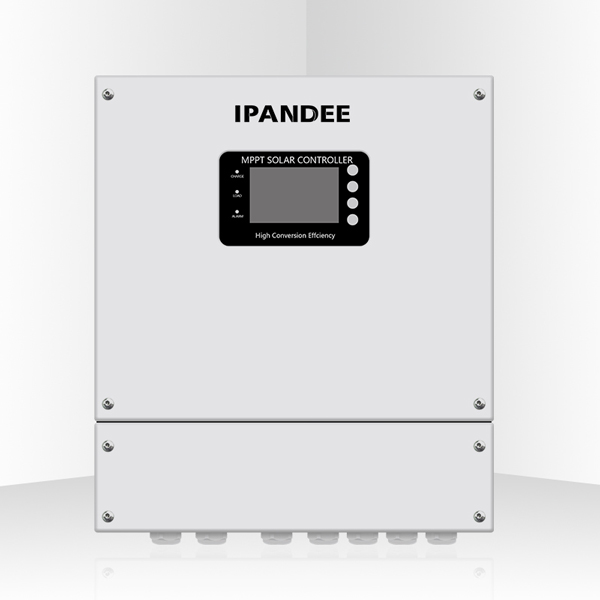The working principle of solar charging controller
Although the control circuit of a solar charging controller varies in complexity depending on the photovoltaic system, its basic principle is the same.
The system consists of photovoltaic components, batteries, control circuit, and loads. Switch 1 and switch 2 are the charging switch and discharging switch, respectively. When switch 1 is closed, the photovoltaic component charges the battery, and switch 1 can automatically restore the battery's charging according to the pre-set protection mode. When switch 2 is closed, the battery supplies power to the load. When the battery is recharged and reaches the pre-set recovery charging point, switch 2 can automatically restore power supply.
The main functions of solar charging controller
Overcharge protection
When the charging voltage is higher than the protection voltage, the solar charging controller will automatically turn off the battery charging. Afterward, when the voltage drops to the maintenance voltage, the battery enters the float state. When it falls below the recovery voltage, the float is turned off, and it enters the equalization state.
Over-discharge protection
When the battery voltage is lower than the protection voltage, the solar charging controller will automatically turn off the output to protect the battery from damage. When the battery is recharged, it can automatically restore power supply.
Load over-current and short-circuit protection
When the load current exceeds 10A or the load is short-circuited, the fuse wire will be melted. After replacement, it can continue to be used.
Overvoltage protection
When the voltage is too high, the output will be automatically turned off to protect the device from damage.
Reverse charging protection
Using a Schottky diode to prevent the battery from charging the solar cell.
Lightning protection function
When there is lightning, the voltage-dependent resistor can prevent lightning strikes and protect the solar charging controller from damage.
Conclusion: The basic function of a solar charging controller is to control the battery voltage and open the circuit. In addition, when the battery voltage rises to a certain degree, the charging of the battery will stop. Old-fashioned controllers mechanically complete the opening or closing of the control circuit, and stop or start the power transmission from the power source to the battery.
Ipandee New Energy Technology is a national high-tech enterprise integrating research and development, production, sales, and related technical support services for photovoltaic controllers, photovoltaic systems, and program planning provided for the photovoltaic industry.
The company has passed ISO9001/ISO14001 quality and environmental management system certification and has obtained many utility model patents, software works, appearance patents, and other products in the photovoltaic field, and has won technical application awards from authoritative organizations in the global photovoltaic industry for many consecutive years. Welcome to inquire.
 English
English  한국어
한국어  français
français  Deutsch
Deutsch  Español
Español  italiano
italiano  русский
русский  português
português  العربية
العربية  tiếng việt
tiếng việt  ไทย
ไทย  Polska
Polska  中文
中文







